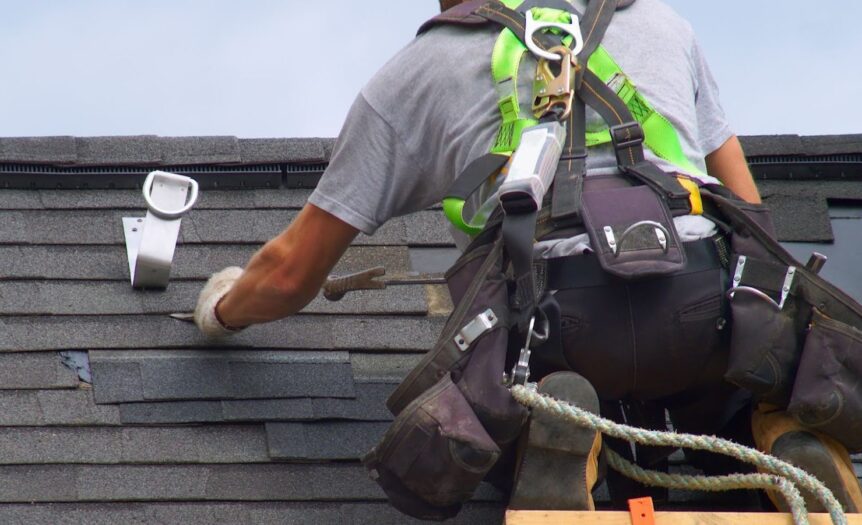If you’re a homeowner, you know that your roof is one of the most important parts of your house. It protects you and your family from the elements and helps keep your home comfortable and safe. However, did you know that your local climate can significantly impact your roof’s repair requirements? Depending on where you live, you may need to take different steps to ensure your roof stays in good condition.
For example, if you live in an area with heavy snowfall, you may need to take extra precautions to prevent ice dams from forming on your roof. On the other hand, if you live in a hot and dry climate, you may need to be mindful of damage caused by UV rays and extreme temperature fluctuations. By understanding how your local climate impacts your roof, you can take steps to prevent damage and extend the life of your roof.
This article explores how local climates can impact roof repair requirements. We discuss common issues that homeowners face in different regions and provide tips and advice for keeping your roof in good condition, no matter where you live. Whether you’re dealing with heavy snow, intense heat, or something in between, we’ll help you understand how to care for your roof and protect your home.
Understanding Local Climate Variability
When it comes to roof repair, the local climate can significantly impact the materials used, the frequency of repairs, and the overall cost. For example, the climate in Perth, Western Australia, has a significant impact on roof longevity. Understanding the local climate variability is crucial in determining the right roof repair and maintenance approach.
Temperature Extremes and Material Expansion
The temperature extremes in your local climate can affect the materials used in your roof. In areas with extreme heat, roofing materials can expand, causing cracks and damage over time. On the other hand, roofing materials can contract in areas with extreme cold, causing them to become brittle and prone to cracking.
To mitigate these issues, choosing roofing materials designed to withstand the local climate is important. For instance, metal roofing is a popular choice in areas with high temperatures due to its ability to reflect sunlight and minimize heat absorption.
Precipitation Patterns and Waterproofing Needs
Precipitation patterns in your local climate can also impact your roof’s repair requirements. Waterproofing is critical in areas with heavy rainfall or snow to prevent leaks and water damage. Additionally, areas with frequent thunderstorms or hailstorms may require more frequent inspections and repairs to address any damage caused by these events.
To ensure your roof is adequately waterproofed, working with a professional roofing contractor with experience in your local climate is important. They can help you choose the right materials and recommend the best waterproofing solutions.
Wind Speeds and Structural Integrity
Wind speeds in your local climate can also impact your roof’s repair requirements. In areas with high winds, choosing roofing materials designed to withstand these conditions is important. Additionally, regular inspections and maintenance are necessary to ensure the structural integrity of your roof.
Working with a professional roofing contractor can help you identify potential issues with your roof’s structural integrity and recommend the right repairs.
By understanding the local climate variability and its impact on your roof, you can take a proactive approach to roof repair and maintenance. With the right materials, waterproofing solutions, and structural integrity, you can ensure that your roof is protected from the elements and lasts for years.
Choosing Materials for Different Climates
When choosing the right roofing materials for your region, consider the local climate. Here are some options for different climate types.
Heat-Resistant Roofing for Hot Climates
If you live in a hot and sunny area, you’ll want to choose roofing materials that can withstand the heat. One option is a metal roof, which reflects the sun’s rays and helps keep your home cooler. Another option is to use durable clay tiles, which can withstand high temperatures.
Water-Resistant Solutions for Rainy Areas
You’ll want to choose roofing materials that can withstand heavy rain and prevent leaks in rainy areas. Some options include asphalt shingles, which are affordable and can last up to 20 years, or slate tiles, which are more expensive but can last up to 100 years.
Durable Materials for High-Wind Regions
If you live in an area with high winds, you’ll want to choose roofing materials that can withstand strong gusts. One option is to use durable metal roofing, which can handle winds up to 140 mph. Another option is to use concrete tiles, which are heavy and can resist strong winds.
Remember, choosing the right roofing materials for your climate is essential to ensuring your roof lasts for years to come. By considering factors such as heat, water, and wind, you can make an informed decision that will protect your home and keep it looking great.
Maintenance Strategies by Climate
Regular Inspections and Seasonal Considerations
To maintain your roof in good condition, it is essential to perform regular inspections and take into account the specific climate of your region. In areas with high humidity, for example, moss and algae can grow on the roof, which can cause damage if left unchecked. In contrast, in areas with high winds, shingles can be blown off, and debris can accumulate on the roof, leading to clogging of gutters and drainage systems. Therefore, it is crucial to inspect the roof at least twice a year and after severe weather events, such as storms or hurricanes. During inspections, look for signs of damage, such as cracks, leaks, or missing shingles, and address them promptly to prevent further deterioration.
Emergency Repairs and Weather Events
In addition to regular inspections, it is also essential to prepare for emergency repairs and weather events. Depending on the climate of your region, you may need to take specific measures to protect your roof from extreme weather conditions, such as heavy rain, snow, or hail. For example, in areas with high snowfall, it is recommended to install snow guards or remove snow from the roof to prevent structural damage.
Similarly, in areas with frequent thunderstorms, it is essential to ensure that the roof is properly grounded to prevent lightning strikes. In case of emergency repairs, it is recommended to have a plan in place, including the contact information of reliable roof repair professionals.
Long-Term Upkeep and Climate Adaptation
Finally, to ensure the long-term integrity of your roof, it is essential to consider climate adaptation strategies. Depending on the climate of your region, you may need to choose roofing materials that are more resistant to specific weather conditions, such as high winds, extreme temperatures, or heavy rainfall. Additionally, you may need to invest in insulation, ventilation, or other measures to improve the energy efficiency of your roof and reduce the impact of climate change. By taking a proactive approach to roof maintenance and climate adaptation, you can ensure that your roof remains in good condition and protects your home for years to come.










